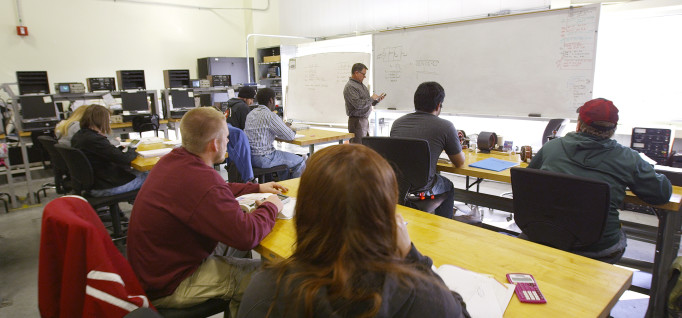What Led to Record Completion?
By Ellen Ullman
December 21, 2015
How did the Kentucky Community and Technical College System award so many associate degrees in 2014–15, and can other colleges do the same thing?
During the 2013–14 academic year, the Kentucky Community and Technical College System (KCTCS) awarded 9,580 associate degrees; in 2014–15, the college awarded 9,632. Since 2000, KCTCS has tripled the number of associate degrees it’s awarded.
KCTCS Chancellor Rhonda Tracy shares five specific reasons for the remarkable increases:
- The rise in online learning. “We’ve had a steady increase in online offerings, which allow degrees to be more accessible to all students,” says Tracy. KCTCS Online: Learn on Demand lets students earn degrees or certificates entirely online; Learn by Term lets students choose from more than 700 online courses, or 140 programs.
- More noncredit, customized workforce training. KCTCS allows students to convert noncredit training to credit-bearing courses, and with a steady increase in customized training, this conversion process is very helpful for students who want degrees.
- Dual-credit courses. Tracy says there’s been an increase in students taking dual-credit courses in high school, which helps with the attainment of an associate degree, because students can start college with credit hours. Some students earn KCTCS credentials upon high school graduation.
- Business and industry support. Through the Kentucky Federation for Advanced Manufacturing Education, students can earn their degrees while working in the field. By allowing students to work and go to school at the same time, more students are able to complete their studies. Six of the KCTCS colleges offer this program in advanced manufacturing technology.
- Outreach to rural areas. “Historically, we’ve seen growth in the ‘Golden Triangle,’ the area outlined by Lexington, Louisville and northern Kentucky,” says Tracy. However, the most recent increases were in the western and eastern parts of the state. She attributes the increases to a renewed focus on those populations.
Although enrollment is down across KCTCS this year (as it is for most colleges), the college system will continue to focus on completion rates. All 16 colleges in the system are working on a strategic enrollment-management plan that is specific to each institution and will include benchmarks for recruiting, retention and completion. “We are expecting continued growth, but we know we have to work on it,” Tracy says.
Two Ways to Boost Completion Rates
There are two strategies that Tracy believes have best served KCTCS in increasing completion rates, and both of these efforts are easily replicable.
The first involves breaking down the degree into smaller steps. Many of KCTCS’s associate degrees are made up of modularized content, which ensures that students don’t get overwhelmed and can see the light at the end of the tunnel. “It’s a general success strategy — stackable, embedded credentials that lead to an associate degree.”
The second factor is a new method of teaching that the college adapted from Accelerating Opportunity Kentucky (AOKY), a program for students who have not completed their GEDs. In AOKY, the developmental coursework is embedded in the content coursework. This teaching approach mixes career training with support for math, writing and reading and gives students the skills they need to succeed in school and compete in the workforce. Students develop technical and foundational skills while working with a success coach and a career coach.
The program was so successful for the students without GEDs that KCTCS opened it up to students who have high school diplomas but are in developmental-education courses. “If we put the students who come in with the greatest need into this track, it reinforces confidence. We don’t want them to get mired in the muck of developmental education, so we have to continue to do a better job on the front end.”











